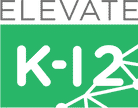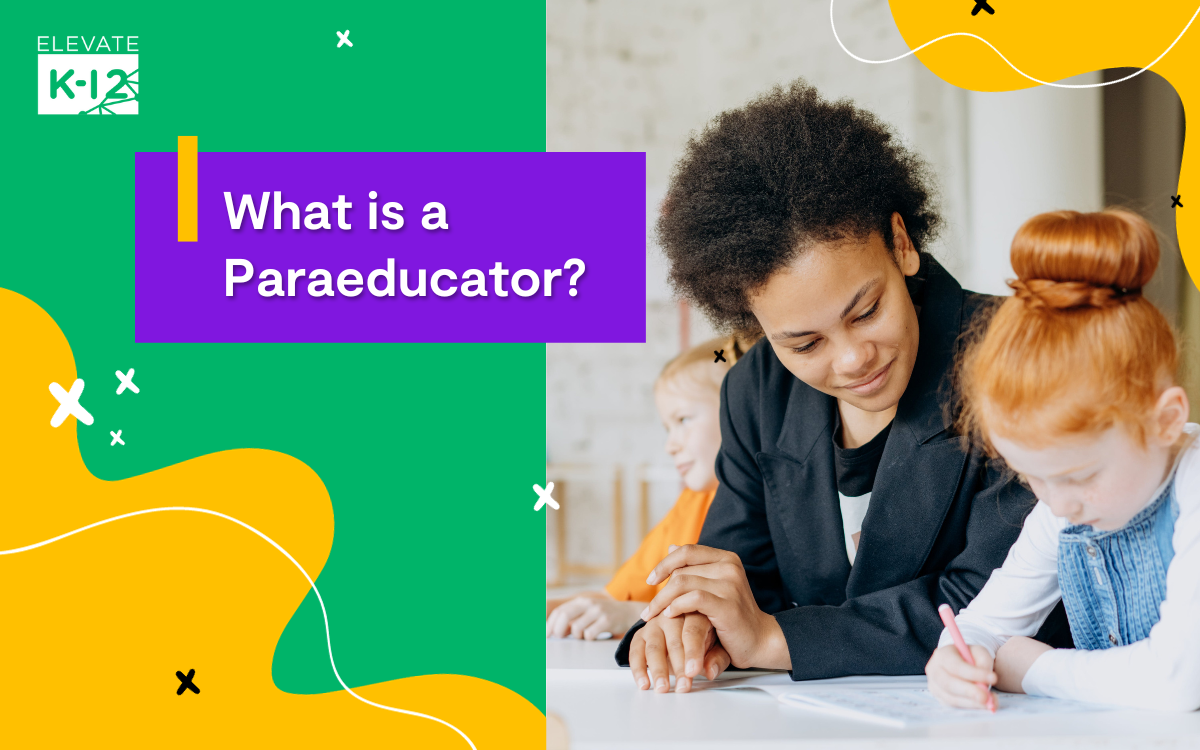In the midst of an ongoing educator shortage, many school districts are reevaluating the roles that paraeducators can play as a part of the educational team, supporting individual student outcomes and teachers themselves.
While these paraprofessionals can’t completely replace classroom teachers, they can significantly ease their workload — helping them do more teaching and keeping them in the field.
Let’s explore paraeducators’ vital role in today’s public school classrooms and how they might help your district address staffing shortages and growing student needs.
What Is a Paraeducator?
Paraeducators work alongside licensed school teachers in K-12 classrooms, providing various help and support, including individualized instruction, guidance, and other services. Paraeducators help foster inclusive education by providing more hands-on support in the classroom, lightening the load on licensed educators and administrators.
Paraprofessional roles in education go by numerous names, including “teacher’s aides,” “teaching assistants,” and “instructional assistants.” Several defined roles or specialties exist, including bilingual paraeducators and special education paraeducators. (We’ll cover all these types later on.)
What Differentiates a Teacher and a Paraeducator?
In most states, paraeducators must have two years of college coursework or an associate’s degree (or pass an equivalent assessment), while classroom teachers must generally hold a bachelor’s degree and be certified in the state they’re teaching in.
Due to the difference in qualification and education, paraeducators work under the supervision of (or report to) classroom teachers.
The exact nature of the relationship depends on the teacher, the paraeducator, and the reasons the paraeducator is in the classroom. But in every case, the relationship is highly collaborative.
What Does a Paraeducator Do?
Paraeducator duties and responsibilities vary widely depending on the classroom teacher’s or students’ needs. Most paraeducator duties fall into the following categories:
Instructional Support
Paraeducators often reinforce learning, performing one-on-one tutoring or working 1:1 or 1:2 with students who need extra help with a concept so the classroom teacher can continue with the rest of the class. This can take the form of answering questions that may not be relevant for the entire class or providing extra direct instruction or review with those students.
Paraeducators are one way districts are addressing the teacher shortage. By offloading some tasks the teacher would otherwise need to handle, paraeducators empower teachers to do more crucial work that only licensed teachers can do.
Classroom Management
Paraeducators also contribute to classroom management. Sometimes, the paraeducator will focus on enforcing classroom rules, helping to maintain order and minimize disruptions in the classroom. When a discipline case occurs, the classroom teacher can turn it over to the paraeducator and continue teaching the rest of the class, ensuring a more favorable learning environment.
Administrative Tasks
Paraeducators also handle various administrative tasks, including preparing materials, organizing classroom logistics, and supporting teachers in other administrative activities.
Behavioral Intervention
Behavioral intervention is another crucial contribution paraeducators provide. They assist teachers in implementing behavior intervention plans (BIPs) for students. In this way, paraeducators use behavior management strategies to help classroom teachers foster and maintain a positive classroom climate.
Translation and Inclusion Support
In some classrooms, paraeducators play a vital role in translation and inclusion support. Bilingual paraeducators may bridge the gap for English language learners, while special education paraeducators can help certain students with learning disabilities thrive in an integrated classroom.
Qualifications for Paraeducators
Qualifications for paraeducators can vary by state and school district, but some standard qualifications and requirements are typically expected of paraeducators.
A high school diploma is nearly always required. In most states, paraeducators must have two years of college coursework or an associate’s degree. Passing a state or local exam may be enough to bypass the coursework requirements.
Certain types of paraeducators may require higher levels of education and certification. For example, a special education paraeducator may hold a bachelor’s degree in special education or a related field but lack a teaching license. The requirements for further coursework or certifications vary at the state and district levels.
Types of Paraeducators
Rarely is a paraeducator called a “paraeducator.” You’ll find well over a dozen different titles in use from district to district. Most paraeducators, though, fall into one of five categories.
1. Instructional Aides
Instructional aides (also called teacher assistants) provide general support to classroom teachers, assisting in delivering instruction, working with students one-on-one or in small groups, and enhancing the overall learning experience.
In other words, instructional aides support both the academics being delivered and the teacher doing that delivery.
Instructional aides assist in general education classrooms and inclusive classrooms.
2. Classroom Coaches
Classroom coaches provide in-class support for educators teaching remotely via LIVE synchronous sessions. These coaches are primarily responsible for facilitating classroom management while the LIVE synchronous teacher gives the lesson. This includes hands-on support like providing assistive technology and adaptive tools for specific assignments, checking in to ensure students understand the material, and reading lessons and slide texts aloud.
With Elevate K-12, classroom coaches work closely with the Program Coordinator to make deadline adjustments, allow for retakes when needed, and deploy assistive tools. You can even record LIVE synchronous lessons upon request so classroom coaches can download and refer to them as needed. This gives coaches an additional resource to support students in the classroom.
3. NPA Aides
DIsterects directly hire Non-Public Agency (NPA) aides from private agencies to work in public schools, including elementary and secondary schools. NPA aides typically assist in situations where a district cannot hire or provide an aide (or cannot provide an aide who can provide extensive enough support to match student needs).
NPA aides often assist students with disabilities and ensure the implementation of and conformity to a student’s Individualized Education Program (IEP).
4. Special Education Paraeducators
Special education paraeducators are district-provided paraeducators who provide specialized support to students with disabilities, including implementing IEPs, adapting instruction, and promoting inclusion.
Special education paraeducators work in both inclusive and dedicated special education classrooms, and they may need more advanced training than a general paraeducator.
Special education paraeducators are one resource districts use to meet special education needs with limited resources, especially in light of the ongoing special education teacher shortage.
5. Bilingual Paraeducators
Schools with diverse student populations, including English language learners (ELLs), may employ bilingual paraeducators to support certified teachers in inclusive classrooms, facilitating communication in a student’s first language and helping students become proficient in English.
Benefits of Paraeducators in the Classroom
Districts are increasing their strategic use of paraeducators in the classroom because doing so delivers proven results.
Individualized Support
Given the demands of the modern classroom, it’s become increasingly difficult for classroom teachers to provide individualized support. This is especially true in inclusive classrooms where multiple students are on IEPs.
Paraeducators assist in tailoring instruction to meet the unique needs of each student, helping them achieve academic success.
They lessen the load on classroom teachers by providing crucial individualized support to students with a level of attention and focus that a classroom teacher can’t offer due to the other demands of the job.
Student Engagement
Paraeducators also help students get and stay engaged by providing a second authority figure in the classroom. A second set of hands and eyes helps reduce distractions and redirect students back to the task.
By reducing these distractions and keeping the focus where it needs to be (on learning), paraeducators help to create and maintain a positive learning atmosphere in the classroom.
Supervision and Safety
Sometimes, the challenges in the classroom grow beyond mere engagement or distraction, crossing into the realm of student safety. The paraeducator can step in as a second set of hands and eyes, ensuring students are learning in safe environments (and not threatening the safety of others).
Paraeducators can monitor students during various activities, from recess to science labs to group learning, to ensure a safe and secure learning environment.
Reduced Teacher Workload
Teachers are leaving the profession for multiple reasons, but there’s little doubt that a burdensome workload plays a role. One recent global study suggests that while pay and recruitment bonuses are vital for increasing recruitment, these alone don’t address retention.
The study concludes that administrators and districts must lessen teacher workloads to keep teachers from leaving the industry.
Paraeducators are an ideal way to do so. They can alleviate teacher workload by assisting with administrative tasks, classroom management, and individualized instruction, allowing teachers to focus more on teaching.
Remember: Most teachers entered the field because of a passion to teach, not to fill out reports and do other paperwork. Providing an assistant to take that load off the teacher’s plate is a great way to keep teachers focused on what they actually love to do.
Behavioral Intervention
Paraeducators assist teachers through behavioral intervention, using positive reinforcement strategies to help manage and improve student behavior, promoting a positive, inclusive classroom climate where learning can thrive.
Learn How Elevate Transforms the Role of Paraeducators
In a moment when the value of paraeducators in the classroom is rising, Elevate K-12 is helping school districts realize even more value from their paraeducators.
With Elevate your paraeducators can act as “boots on the ground” personnel in classrooms: District-hired paraeducators can handle immediate in-person classroom needs while the Elevate-provided remote teacher provides direction and instruction.
Our certified, industry-leading LIVE synchronous teachers work collaboratively with your district-provided paraeducators, providing live remote teaching from professionals with all the credentials needed for your district.
Explore LIVE online teaching for your schools with Elevate K-12.

